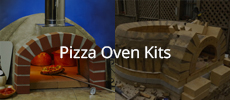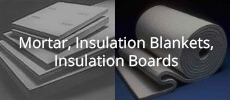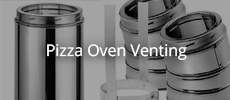Laying the floor
After being so excited to get started on the floor I had a nervous and slightly overwhelmed feeling when I got started today. I realised I had chosen the width of my landing based on the size of the oven opening rather than using a ‘multiple of a brick width. After a bit of deliberation decided to go for six bricks wide which slightly overhung my vermicrete layer which I was a bit concerned about. I didn’t need to be though - I found a solution later on.
As I’ve seen many others do I laid the brick pattern a couple of times to check everything before making my first cut. I used a bolster for some but decided I wanted more precision because a couple did not break off very cleanly. Using the diamond blade on the grinder and dunking the bricks in a bucket of water to try and reduce dust I found the cutting pretty easy.
I scooped up all the brick dust and mixed with some sand and spread on top of my insulation layer before starting to lay the bricks. If I had my time again I would have used a bit more sand mixture to make the laying a bit easier.
I’m sure other first timers have done better. The floor is not perfectly level but on the other hand I’m not sure any of the ‘lips’ are significant enough to catch a peel on.
The last thing I did was cut away the excess vermicrete having used a square mound. Hacked away with a bolster before trying a hand saw. Worked a treat! Especially good as it was 2130 - don’t think the neighbors would have appreciated the grinder at that time!
I then used some of the vermicrete ‘dust’ to fill my small thermal break between the landing and the oven floor. You can see the slightly darkened line at the top of the stood up bricks.
Overall I’m pretty stoked. I think it’s good enough and I’m excited to get onto the dome soon!
Announcement
Collapse
No announcement yet.
Finally decided on 32in castable dome
Collapse
X
-
Materials have arrived!
Never been so happy to see a pallet of anything let alone bricks in my life!! What is this oven doing to me?
Cannot wait for the torrential rain to stop and the weekend to come so I can move onto the firebrick floor. I believe I have all the materials now for the next few stages - can’t wait. Already getting a bit apprehensive about the flue casting stage but I’m getting ahead of myself.1 Photo
- Likes 1
Leave a comment:
-
 I did the exact same with my materials!
I did the exact same with my materials!
As you mentioned it is good to make you let the vcrete dry more.
Great gifts - fathers day soon so might put in a book suggestion to my wife haha!
- Likes 1
Leave a comment:
-
In the meantime
So I’ve let my materials management slip and I’ve been sat waiting for bricks to arrive so I can start the next step of laying the floor. Never mind - it’s probably ensured that the vermicrete gets time to dry.
I did really enjoy my birthday recently though - check out the gift of peels and floor brush etc!
Also got a great looking book called From The Wood-Fired Oven which I think is going to turn out to be excellent - seems to cover multiple aspects of oven build, management and then lots and lots of different ways of using the oven - broadening my horizons beyond pizza and definitely emphasis good using the full heat cycle so that firing and heat doesn’t go to waste.
Author is Richard Miscovich2 Photos
- Likes 1
Leave a comment:
-
There is more water in the vcrete that you visually see. Once you cover it with fire brick the it is just that much harder for the vcrete to dry. Cutting, I don't know, maybe a angle grinder with a cut off wheel.
Leave a comment:
-
More on the Vermicrete insulation layer
So just taken off the frame - it’s been on for more than a week for everything other than the top inch and with the warm weather it’s drying out quickly.
Just a technical question though on next steps. I’ve seen it’s not uncommon to have built this layer straight edges but what is the best tool/method for cutting away those back corners (indicated in yellow on the photo). And should I do that before or after I’ve shaped the bricks that are going to sit on top - I’m thinking afterwards - I.e. cut the brick floor to shape and then mark on where the insulation layer can be trimmed away?3 Photos
Leave a comment:
-
Because the grains of vermiculite are so porous the mix requires way more water than required for the hydration process. That means lots of free water so it’s not really necessary to hold it in for damp curing, but it is a nuisance to get rid of a large amount of it by fire once it’s been covered over with floor bricks. So leave it uncovered to let it dry more before covering it with brick.
Leave a comment:
-
DavidS you must have to say that so often to us first-timers
I can’t view that doc on my phone but I will take a look later. I did drill myself some of the escape holes last weekend though - made sure they went through the concrete slab and up into the vermicrete.
We have some surprisingly warm weather right now - I kept the vermicrete covered with plastic last week - do I need to do that or just leave it uncovered this week? Apologies if the answer is in the doc!
Leave a comment:
-
Finishing the Vermicrete under floor insulation
So managed to finish off the vermicrete today having bought a 2nd 100l bag and some more cement.
Struggled to get it level at first and decided to do what I think is called a slurry? The last few millimeters are a mix of about 1:1 vermiculite and cement and quite wet - allowed me to get a flatter finish. I’m assuming it’s ok because I still have about 95mm of normal 5:1 mix there too.
Really looking forward now to starting the fire bricks layer. I’ve decided to go for the proper bricks instead of the storage heater second hand ones. I’ve spent so much by this point it doesn’t make sense to compromise now.
Hoping I can share a brick oven floor next weekend....1 Photo
- Likes 1
Leave a comment:
-
No highjack intended UtahBeehiver! New thread about underfloor insulation started.
- Likes 1
Leave a comment:
-
Will be interested where this goesOriginally posted by WoodywWun View PostI've dug a little further and Here is some more information. Apologies if this isn't news to you!
The thermal conductivity ("U value") of a 100mm Thermalite Turbo block is 0.11 W/mK and the U value of the Victas Ceramic Fibre Board is 0.08 at 400C (Lower is better insulation). From another forum, I have found that in the "CIBSE" guide that vermiculite concrete has a U value of 0.17 (not sure for what thickness). I understand that you need a minimum of 100 mm thickness for Vermiculite concrete?
So the order is FB > Thermalite > Vermiculite.
A Thermatlite Turbo measuring 100 x 215 x 440 will cost around £1.70. I'm not sure how stable a Thermalite would be under a cooking floor. Any ideas? I'll look out for your thread!
I'll look out for your thread!
Leave a comment:
-
Woody,
It is time for you to start your own build thread rather than hijacking this thread.
- Likes 1
Leave a comment:
-
I've dug a little further and Here is some more information. Apologies if this isn't news to you!
The thermal conductivity ("U value") of a 100mm Thermalite Turbo block is 0.11 W/mK and the U value of the Victas Ceramic Fibre Board is 0.08 at 400C (Lower is better insulation). From another forum, I have found that in the "CIBSE" guide that vermiculite concrete has a U value of 0.17 (not sure for what thickness). I understand that you need a minimum of 100 mm thickness for Vermiculite concrete?
So the order is FB > Thermalite > Vermiculite.
A Thermatlite Turbo measuring 100 x 215 x 440 will cost around £1.70. I'm not sure how stable a Thermalite would be under a cooking floor. Any ideas?
- Likes 1
Leave a comment:
-
...just found this about the thermal conductivity of Thermalite blocks. Does it mean anything to anybody!? "Designed thermal conductivity (λ) 0.11W/mK"
Leave a comment:





Leave a comment: